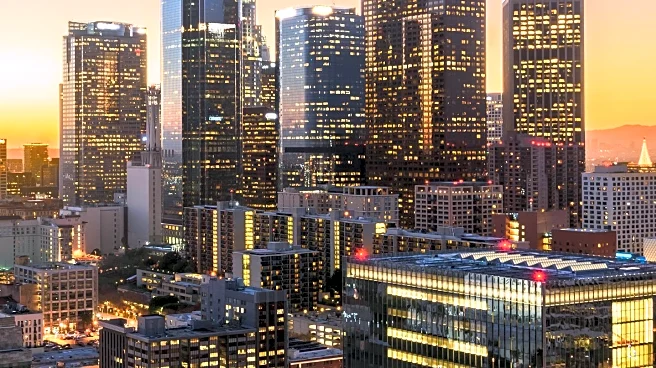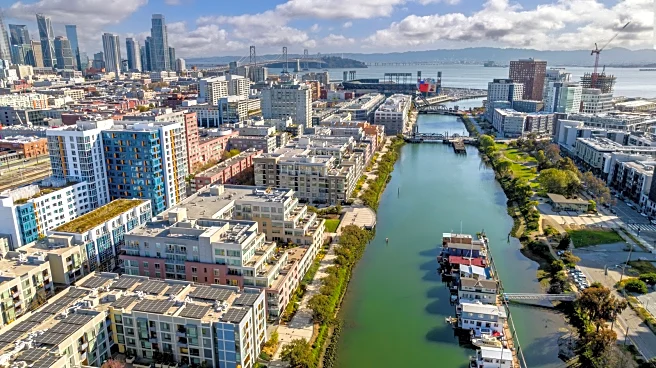What is the story about?
What's Happening?
The Beverly Center in Los Angeles, often criticized for its design, has been affectionately dubbed 'The Incredible Bulk' due to its imposing structure. Opened in 1982, the mall faced harsh reviews for its lack of architectural setbacks and landscaping. Despite its initial reception, the Beverly Center has become a significant part of the city's commercial landscape. The recent passing of its designer, Louis Naidorf, has reignited discussions about the mall's architectural impact. Naidorf, also known for the Capitol Records tower, left a legacy that continues to influence perceptions of urban design.
Why It's Important?
The Beverly Center's design highlights the evolving nature of architectural appreciation and urban development. Initially criticized, the mall's structure has become a cultural landmark, reflecting changes in public taste and urban planning priorities. This shift underscores the importance of considering long-term impacts in architectural design, as buildings can gain new significance over time. The Beverly Center's story is a reminder of the complex relationship between architecture, community identity, and commercial success, influencing future projects in urban environments.
Beyond the Headlines
The Beverly Center's journey from criticism to appreciation raises questions about the subjective nature of architectural beauty and its role in shaping urban identity. It challenges the notion of aesthetic permanence, suggesting that public perception can evolve with cultural and societal changes. This case also highlights the potential for buildings to serve as historical markers, capturing the essence of their era and contributing to the city's narrative. As urban landscapes continue to develop, the Beverly Center's story may inspire more inclusive and adaptive approaches to architectural design.
AI Generated Content
Do you find this article useful?












